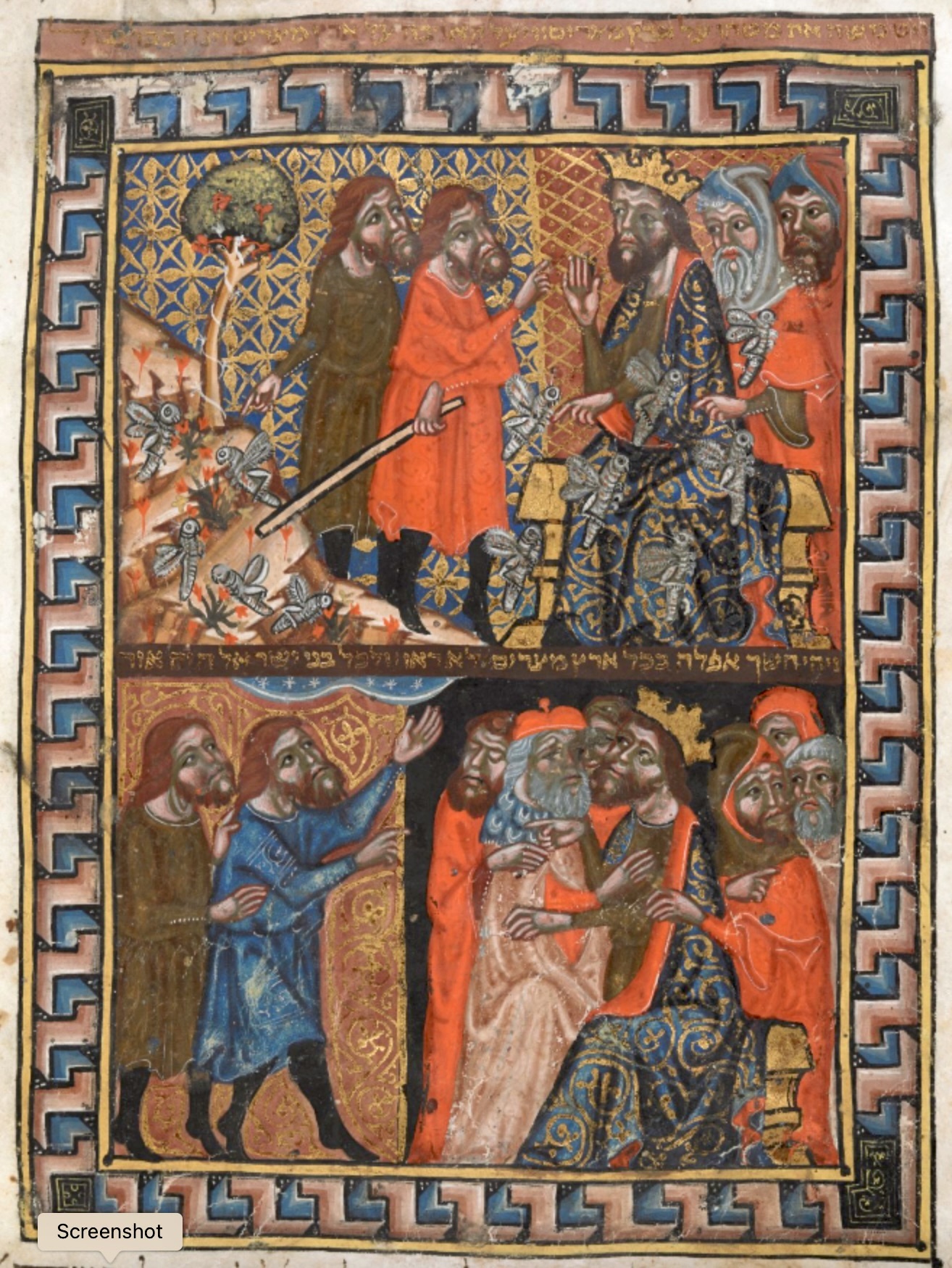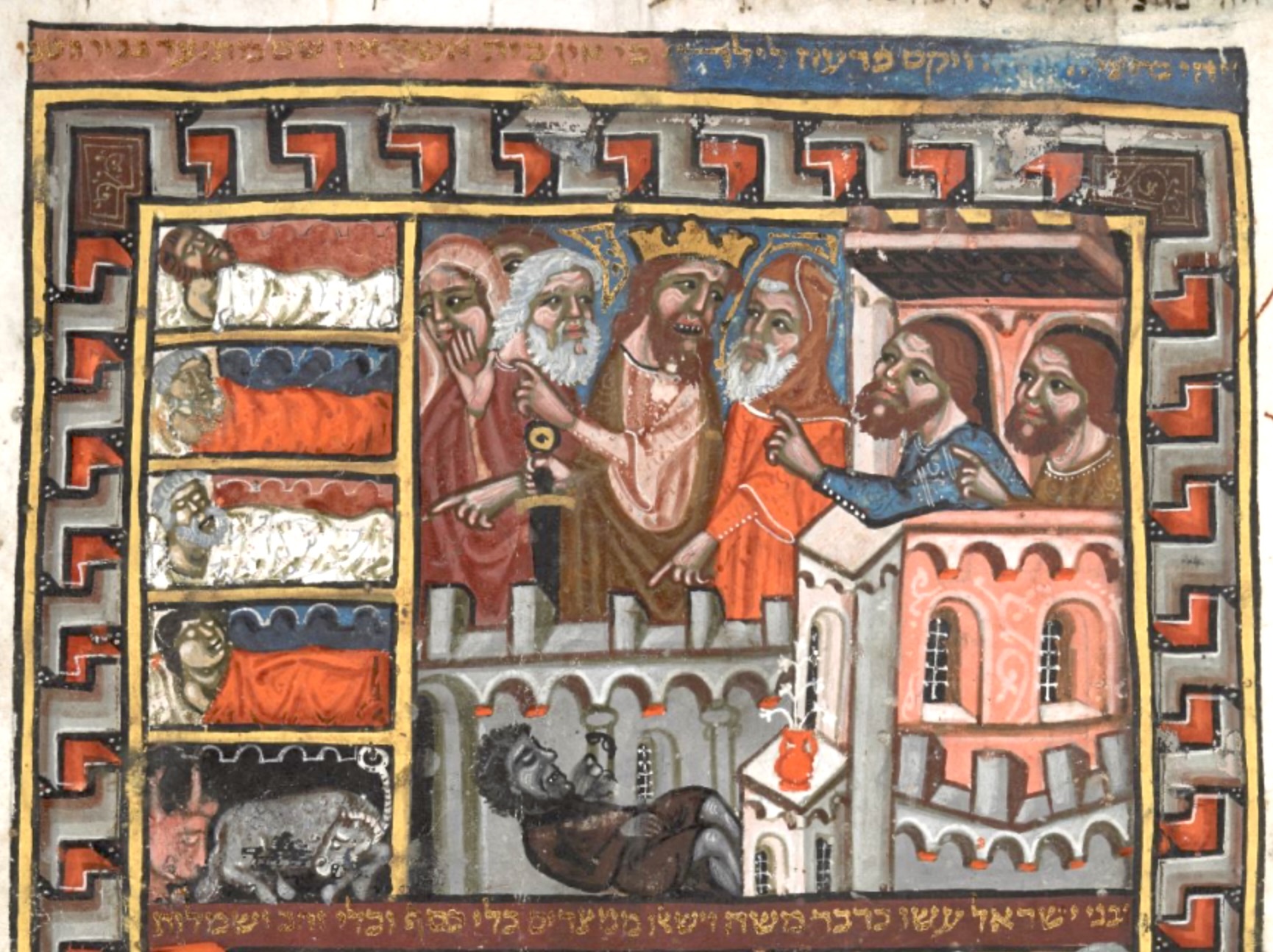Torah Study Date
Saturday, July 1, 2023
Verses Covered
Exodus (Sh’mot) 9:17-9:28
Next Session
Saturday, July 8, 2023
Starting at Exodus 9:29
Last week we discussed the plague of hail. We noted YHVH telling Moses to tell Pharaoh that he continues to be an obstacle to YHVH’s people by not sending them off. We discussed “send them off” compared with “let them go” and noted the former makes Pharaoh more active. YHVH continues by telling Moses to tell the people that he will send heavy hail and that they should put inside all the livestock they keep in the field and that every human (adam) and beast in the field will perish from the hail. Then we noted the two groups of servants, those who fear YHVH’s word and those who do not. The ones who do fear it have their people and livestock go inside and those who did not fear it leave their servants and livestock in the field. R. Sara discussed the difference in this plague—that in it, there is an opportunity to avoid the plague; that those who fear God do so by staying inside; that God is willing to accept people who fear God, including Egyptians.
We discussed Moses reaching out with his staff and what happens then, noting the thunder and hail and the lightning that goes to the ground and flashes in the hail, very heavy. We noted the hitpael binyan of the verb used regarding the lightning flashing. The hitpael makes the verb reflexive so that the fire takes hold of itself or feeds off itself, as R. Ben said, or comes down of its own volition, as R. Sara said. We noted again the use of ‘heavy’ as well as the two statements that there had been nothing like these weather conditions since the founding of Egypt/since Egypt became a nation. We pondered over the idea, discussed last week, that Egyptian gods were to produce order and dissolve chaos and that, instead, Egypt becomes more and more chaotic. Everything that was in the field was struck—from human to animal—and hail struck all the vegetation (esev, meaning food crop) and shattered every tree (shiber is piel which is intensive so it means shattered). We noted that, of course, in Goshen, where the Israelites are, there is no hail.
We noted, then, extraordinarily, Pharaoh sending for Moses and Aaron and saying he, Pharaoh, sinned; and that YHVH is righteous and Pharaoh and his people wrong. Pharaoh asks them to plead with YHVH to stop the hail and avows that then he will send the Israelites off. We noted that Moses knows it is for show (as we will see in verse 30). Pharaoh knows he is out of his league, R. Sara said, and we discussed God’s goal, in all of this, of making himself known. Pharaoh seems finally to recognize God as do some of the servants.
Our artwork this week is from the Brother Haggadah (1330’s C.E., Catalonia, Spain), Plague of Locusts and Plague of Darkness (above), and Plague of the First Born (below). The artist(s) makes the miniature speak to medieval times by portraying Pharaoh as a king wearing a crown and all the figures wearing medieval clothes. The onlookers look increasingly distressed as the darkness falls and, finally, the firstborn die. The Haggadah is called the “Brother Haggadah” because it was the model on which the Rylands Haggadah was based.


